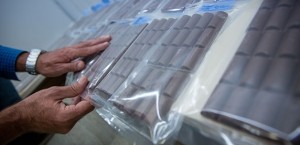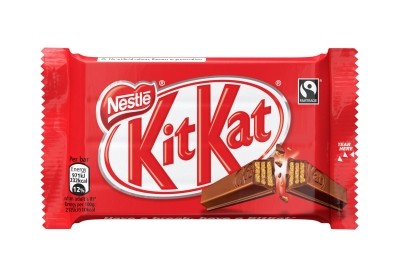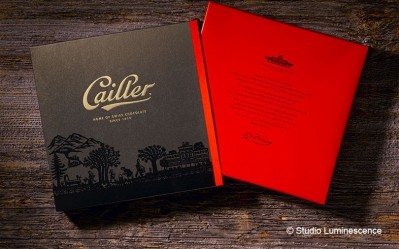R&D Insider - From Nestlé's lab in Lausanne
Foiling over-packing: Nestlé project aims to reduce environmental impact of chocolate wrappers

The aim is to reduce its environmental impact, while preserving the shelf-life of the product.
The firm is running trials with its chocolate portfolio as it plans for several product introductions in the category, but eventually intends to run the methodology across its entire range to saves tonnes of packaging.
Hitting the packaging sweet spot
"The issue is to avoid over-packing,” Dr. Robert Witik, senior specialist of sustainability & packaging material science at Nestlé, told ConfectioneryNews at the multinational’s research center in Lausanne, Switzerland.
“If we don’t understand the protection requirements well, we are forced to overestimate their protection requirements. Therefore we over-pack and increase the environmental impact."
He said Nestlé was already at the “sweet spot” for some products, but acknowledged others may be over-packed.
Nestlé's is testing various packaging options against its in-house Ecodex tool to understand which has the best environmental performance.
Nestlé will test degradation factors such as exposure to light and oxygen for each product to gauge the required shelf-life/ It will review products against a European climate (around 20 degrees, 65% humidity) and a tropical climate (30 degrees and 70% humidity) to adapt packaging to market conditions.
Exploring aluminium alternatives
Much of Nestlé’s chocolate portfolio is wrapped in aluminium with secondary paper packaging – such as its confectionery unit top seller KitKat.
Yves Wyser, senior packaging research scientist at Nestlé, said that while aluminium provided a high barrier to protect the product it had “a very high environmental impact”.
“Sometimes it's needed, sometimes probably it's not needed. By knowing the degradation properties of the product we could maybe design the packing differently to avoid the use of aluminium and still have the right quality and safety for our product."
One alternative to aluminium is metalized laminated film, a thinner film that has only a few nanometres of aluminium thickness.
"We realized we could move out of aluminium if we accept to reduce shelf life - which is also one new strategy - to reduce shelf life to reduce the environmental impact,” said Wyser.
A product may for example have a shelf life of 24 months, but is typically consumed within nine months – therefore Nestlé may explore cutting the shelf life through packaging to reduce the environmental impact.
Shedding light on packaging options

Asked what Nestlé’s early testing had garnered, Wyser said: "We see that light has a strong effect on the quality of the product. Just switching from aluminium to a transparent packaging for example wouldn’t fit, we wouldn’t be able to keep the quality of the product at the end of the shelf-life.”
"We could get rid of the aluminium if we guarantee that the product stays in the dark,” he said.
Nestlé currently uses no transparent packaging for its chocolate portfolio, but one aim of the project is to assess the feasibility of clear packaging.
But Wyser said some chocolate types were unsuitable. “For example if you take white chocolate, this is extremely sensitive to light so it wouldn’t be possible to pack it in transparent packaging because rancidity would develop very fast."
What about recycled materials?
Nestlé is also apprehensive about moving to recycled materials.
"The paper that is currently used to pack chocolate tablets is not recycled paper - In many cases we cannot use recycled paper due to mineral oil migration," said Wyser.
He said that while the food industry printed with vegetable oils, newspapers and magazines often used cheaper mineral oils, some types of which are known carcinogens.
"It's very difficult to avoid it. Some newspapers printed with mineral oils enter the recycling cycle and hence we might have traces in the recycled paper," Wyser said.
But he added that scientists are exploring whether an internal coating could act as a barrier to mineral oil migration.
Portion-control
Nestlé will also weight up the benefits of portion-controlling products through packaging to reduce the environmental impact.
"With portion-control you might use more packaging, but you also have the ability to prevent food waste because you're not opening a box of 20 products…. So you can keep the product longer, you don’t have to throw it away because you didn’t eat them all,” said Witik.
Nestlé’s project will run until the end of 2016.








